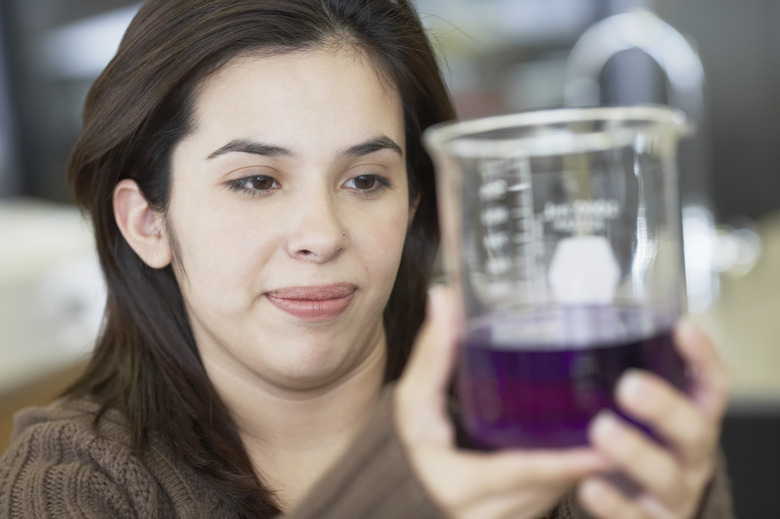How To Measure The Density Of Liquids
The density of a liquid is far easier to measure than that of a solid or gas. The volume of a solid can be difficult to obtain, while the mass of a gas can rarely be measured directly. You can, however, measure the volume and mass of a liquid directly and, for most applications, simultaneously. The most important parts of measuring the density of a liquid are ensuring you calibrate the scale properly and read the volume accurately.
Step 1
Place the volume-measuring container on the scale. Adjust the scale using manual adjustments or the scale's automatic "tare" function, so the scale reads "0" with the container on it. The container can be anything that has markings that allow volume measurement. In chemistry labs, the most common containers like this are graduated cylinders or beakers.
Step 2
Add the liquid to the container and read the volume measurement. Many times, the surface of the liquid will be curved where you are reading the measurement. If the curve is pointing downward, creating a cup shape, read the bottom of the curve. If it points upward, creating a hump shape, read the top of the curve. Record this value.
Step 3
Read and record the mass from the scale.
Step 4
Divide the mass by the volume to calculate the density for this liquid.
Things Needed
- Mass scale
- Volume measurement container
- Calculator
References
Cite This Article
MLA
McKenzie, Grant D.. "How To Measure The Density Of Liquids" sciencing.com, https://www.sciencing.com/measure-density-liquids-5815427/. 24 April 2017.
APA
McKenzie, Grant D.. (2017, April 24). How To Measure The Density Of Liquids. sciencing.com. Retrieved from https://www.sciencing.com/measure-density-liquids-5815427/
Chicago
McKenzie, Grant D.. How To Measure The Density Of Liquids last modified March 24, 2022. https://www.sciencing.com/measure-density-liquids-5815427/
